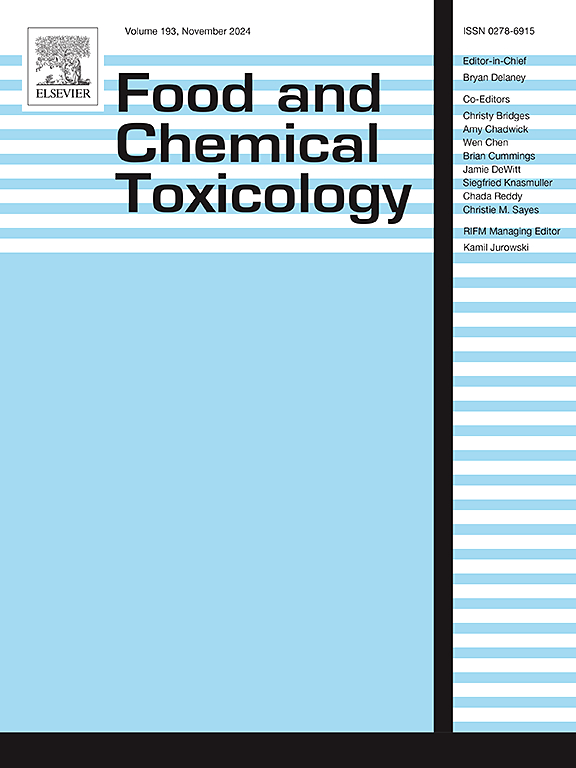Environmental contamination by bisphenols: From plastic production to modulation of the intestinal morphophysiology in experimental models
IF 3.9
3区 医学
Q2 FOOD SCIENCE & TECHNOLOGY
引用次数: 0
Abstract
Bisphenols are frequently found in a range of plastic products and have been associated with the development of diseases such as diabetes mellitus type 2 and obesity. These compounds are known as endocrine disruptors and have led to restrictions on their use due to their presence in the environment and their association with non-communicable chronic diseases. The gastrointestinal tract, being the primary site of food and water absorption, is particularly vulnerable to the effects of bisphenols. For this reason, a review of studies showing associations between bisphenols exposure and adverse effects in the gut microbiota, morphology tissue, gut permeability, and on the enteric nervous system was carried out. We have included perinatal studies and in different adult experimental models. The effects of bisphenol exposure on the gut microbiota are complex and varied. Bisphenol exposure generally leads to a decrease in microbial diversity and may impact the integrity of the intestinal barrier, resulting in elevated levels of inflammation, changes in morphological and metabolic characteristics of the gut, modifications in tight junction expression, and changes in goblet cell expression. In addition, bisphenol exposure in the perinatal phase can lead to important intestinal changes, including increased colonic inflammation and decreased colonic paracellular permeability.

求助全文
约1分钟内获得全文
求助全文
来源期刊

Food and Chemical Toxicology
工程技术-毒理学
CiteScore
10.90
自引率
4.70%
发文量
651
审稿时长
31 days
期刊介绍:
Food and Chemical Toxicology (FCT), an internationally renowned journal, that publishes original research articles and reviews on toxic effects, in animals and humans, of natural or synthetic chemicals occurring in the human environment with particular emphasis on food, drugs, and chemicals, including agricultural and industrial safety, and consumer product safety. Areas such as safety evaluation of novel foods and ingredients, biotechnologically-derived products, and nanomaterials are included in the scope of the journal. FCT also encourages submission of papers on inter-relationships between nutrition and toxicology and on in vitro techniques, particularly those fostering the 3 Rs.
The principal aim of the journal is to publish high impact, scholarly work and to serve as a multidisciplinary forum for research in toxicology. Papers submitted will be judged on the basis of scientific originality and contribution to the field, quality and subject matter. Studies should address at least one of the following:
-Adverse physiological/biochemical, or pathological changes induced by specific defined substances
-New techniques for assessing potential toxicity, including molecular biology
-Mechanisms underlying toxic phenomena
-Toxicological examinations of specific chemicals or consumer products, both those showing adverse effects and those demonstrating safety, that meet current standards of scientific acceptability.
Authors must clearly and briefly identify what novel toxic effect (s) or toxic mechanism (s) of the chemical are being reported and what their significance is in the abstract. Furthermore, sufficient doses should be included in order to provide information on NOAEL/LOAEL values.
 求助内容:
求助内容: 应助结果提醒方式:
应助结果提醒方式:


